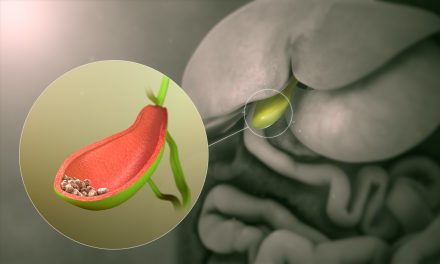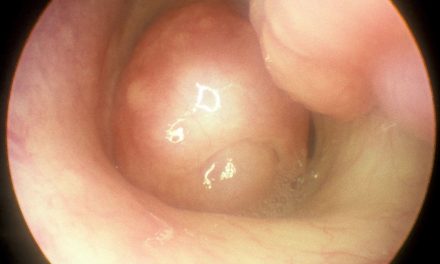In a recent paper read before the San Francisco County Medical Society (Southern California Practitioner), Dr. O.V. Thayaer, of that city, contributed some decidedly original and, perhaps, very useful, information to the medical world. From that paper we condense the following. Dr. Thayaer treats the diseases named, by the concentrated rays of the sun (solar cautery), to wit:
Capillary aneurisms, varicose veins, indolent, chancroidal and rodent ulcers, epithelial cancers, birth, India ink and powder marks, bleeding vessels and surfaces, hemorrhoidal and erectile tumors, morbid growths, such as warts, moles, small wens and all diseases of the skin of a parasitic nature.
He began the use of the concentrated sun’s rays (using a common sun-glass) in the treatment of diseases of the skin and its appendages, being led to the use of this treatment by the merest accident. The first experiments were directed to the removal of moles and warts and were crowned with perfect success, and he soon realized the necessity of obtaining larger and more perfect lenses. With these he widened the field of operations, working carefully and cautiously, and watching every step of the process that no permanent injury might result from the use of so positive a remedy.
Outside of a short article in The Lancet, over thirty years ago, Dr. Thayer could find no record of anyone having employed this novel treatment before, during a practice of more than a quarter of a century.
He writes: “I have found no caustic or cautery to compare with solar heat in its beneficial results. Unlike other caustics it can be applied with perfect safety upon the most delicate tissues and is at all times under the control of the operator. It has other advantages- the system receives these treatments kindly. The irritation and inflammation following its application is surprisingly slight and of short duration. Another point in its favor, the pain subsides immediately upon the removal of the lens. I have burned the skin of nearly the whole of one side of the face at one sitting, destroying the cuticle; within five minutes the burned surface would be free of pain. There is a curative power in the chemicla rays of the sun yet unexplained. I avoid blistering, carrying the burning beyond this point, carconizing the tissue.
“In the treatment of morbid or malignant growths, we destroy most fully the morbid products. Upon this depends the success of the operation. The morbid tissue having less vitality than the normal, succumbs to the cautery before the naturla structures adjoning are injured. This enables us to attack bokdly the malignant or morbid growths without any fear of injury to the healthy tissues surrounding them.
“In the primary treatment of chacre, or chancroids, this treatment of chancre, or chancroids, this treatment stands unrivaled. Within the space of two minutes the infectious chancroid, or the true Huntarian chancre, is deprived of its contagion and changed to a simple ulcer. Hemorrhoidal tumors, when external to the sphincter, are bodily destroyed, and the parts heal without unpleasant symptoms. Indolent ulcers of long standing take on new life after the application of solar heat. In the course of a few days healthy granulations appear, which continer to a favorable termination, especially when the general health is looked after. Granular surfaces, which are inclined to bleed from the slightest touch, are changed to a healthy state. Hemorrhages from small arterial or veinous vessels are checked almost instantly with the solar cautery.
“Diseases of the skin of a parasitic nature are treated with marked success. Cases that have withstood the repeated attacks of the usually prescribed remedies, have succumbed to one or more applications of solar heat. I believe that the pustules of smallpox can be aborted, and pitting prevented, with this agent. What seems surprisingly strange to me, is the fact that a remedy of so much curative power and value, and one so easily utilized, should have remained unknown to the medical profession os long. From the time I first tested the virtues of solar heat, as a remedial agent, up to the present, I have kept back nothing of value from the profession, have been villing and ready at all times to impart any knowledge acquired, and have urged my professional brethren to use this agent in their practice. I am sorry to confess, however, that the liberality on my part has not at all times been met by a fraternal response. I have been misrepresented and even accused of quackery.”
I will close by noticing a few cases out of many treated successfully by solar cautery:
CASE-1:- Mr. M.C., Petaluma, Sonama county, aged some fifty years, came under my care for treatment of an ulcer of the neck, just below the angle of the lower jaw. It dipped down under the edge of the sterno-cleido-mastoid muscle, immediately over the carotid artery. The ulcer measured one and a half inches in diameter, circular in form, and presented a dark crust, superficially cracked and furrowed. The floor was depressed below the raised margin of the ulcer. The sinuous raised moulding which surrounded the ulcer was of a cartilaginous hardness of a faint pink color. A part of this rim was being briken up by ulceration, with symptoms of malignancy, bleeding upon the slightest touch. Still in most respects a characteristic 10dent ulcer. The sinuous raised moulding which surrounded the ulcer was of a cartilaginous hardness of a faint pink color. A part of this rim was being broken up by ulceration, with symptoms of malignancy, bleeding upon the slightest touch. Still in most respects a characteristic 10dent ulcer. The history of the case was a remarkable one. Twenty-four years previous to this consultation he was kicked by a young colt, producing the wound upon the neck, since which time he had failed in his efforts to heal the injured surface. I commenced the treatment of this case by concentrating the rays of the sun through a large and powerful lens,
Destroying the raised margin to a level with the healthy skin and also canterized most thoroughly the floor of the ulcer; the slough came away the fifth day, the wound exhibited to all external appearances a healthy ulcer, granulations soon appeared and healing commenced and continued with few interruptions. When it become necessary I repeated the operation until every vestige of the morbid material was destroyed. The wound healed in a few weeks, leaving a very slight cicatrix.
CASE-2:- Miss B., of this city, aged twenty, consulted me as to the removal of a port-wine colored mark situated upon the entire left side of the chin, commencing at the median line of the lower lip, extending to the angle of the mouth, down to the lower edge of the jaw bone. She came into my office thickly veiled. It required no little coaxing on my part to get her consent to uncover her face, that the mark could be seen. She remarked that “she always wore a veil outside of her immediate family.” She readily consented to an operation for the removal of the discoloration, as she had suffered great mortification and mental distress, especially since budding into womanhood. With a powerful lens of a local diameter of four lines. I cauterized the whole discoloration at one sitting, and applied to the part a dressing of zinc ointment, as a protection from the air. The burnt crust came off in one week, leaving the skin much lighter in color. Two weeks later I repeated the operation, and then waited the final results of the treatment. Two months from the first operation scarcely a trace of the mark could be noticed. I lost sight of this young lady for some eighteen months, then met her one evening at a small party, at a mutual friend’s, but did not recognize her. As I was about to leave she accosted me and said in a whisper, “Doctor, have you forgotten your old patient?” After looking her in the face a moment, I answered by asking, “Are you the young lady from whose face I removed a mark?” She replied, “I am,” and signaled me not to expose her. I noticed, however, that the treatment had proved a perfect success.
CASE-3:- A lady with a daughter of six years, residents of this scity, called at my office to consult me about the daughter, who had upon the left side of the face, two inches below the eye and near the nose, a Small tumor, the size of a walnnt, on the surface of which was an ulcer, which was subject to frequent bleedings. The commencement of this tumor dated back some three years. Its growth was slow but continuous. The mother informed me that she had consulted some twenty physicians and surgeons, only one of whom advised its removal. The advice generally given was, “Let it alone, dont molest it.” Upon examination it proved to be a very fine specimen of epithelial cancer. The consent of the patient was readily given for its removal by the solar cautery. She was brought under the influence of an anaesthetic, the cautery was applied and the morbid growth was destroyed in some four minutes. Five days after ward the slough came off, a simple ulcer remaining, which under suitable dressing was healed in a very short time, there remaining a small cicatrix as the only evidence of the previous disease. Eight yearss have elapsed and there has been no return. I have been happily surprised to find, in nearly all of the operations with the solar cautery, after the healing of the wound, so slight a cicatrix; much less than other modes of treatment, not even the cutting of the knife excepted.
CASE-4:- India ink mark. Mr. B. And wife called for advice; the latter had upon the outside of the leg below the knee, two large Roman letters, produced with India ink. I noticed that the husband was more than anxious for their removal. There was a little romance connected with this case, as I learned afterward. The young lady while residing in a seafaring town had a lover-a sailor boy. After their engagement he took the liberty to print upon her limb the initials of his name. As ever, true love rarely runs smoothly at all times, the lovers became estranged, and the present husband became her Benedict. These were a constant reminder that he was not her first love. The solar cautery was brought to bear, however, upon these ghostly letters, as he conceived them, and they were soon obliterated, leaving no trace of their former self.
CASE-5:- Mrs. B., aged some forty years, of Petluma, Cal., came under my care some nine years ago, for the treatment of a disease of the right breast, mostly confined to the nipple and the tissue surrounding it. The nipple had receded more than an inch into the body of the gland, leaving an aperature the diameter of which was equal to that of my index finger. It was lined with a granular membrane secreting pus. The adjoining structures were hardened and the skin of a dark-red color. The patient informed me that the disease commenced some fifteen years since, with an ulcerated nipple during these long years of suffering she had been unable to get any permanent relief from the physicians she consulted. I commenced thee treatment of this case by placinng ger in a position to apply the concentrated rays of the sun, directly to the aperature left by the receding nipple, using a lens of a focus of two lines. With this I most thoroughly cauterzed and destroyed the granular membrane as well as a small layer of the parts adjoining. The burned material came away within a few days, leaving the surfaces in a satisfactory condition. With treatment to improve the general health and the use of suitable dressings, I was enabled in a few weeks to produce a permanent cure. There has been no return of the disease. I selected these few cases from a list of many others that were successfully treated with the solar cautery. You will notice that each differs in material points from the others. I did this to show that the concentrated rays of the sun could be utilized in the treatment of a large class of surgical diseases.




